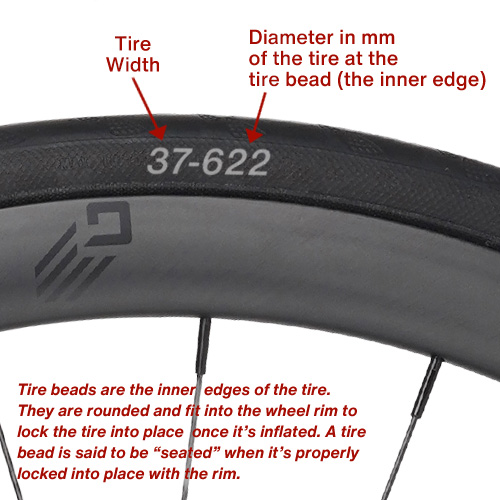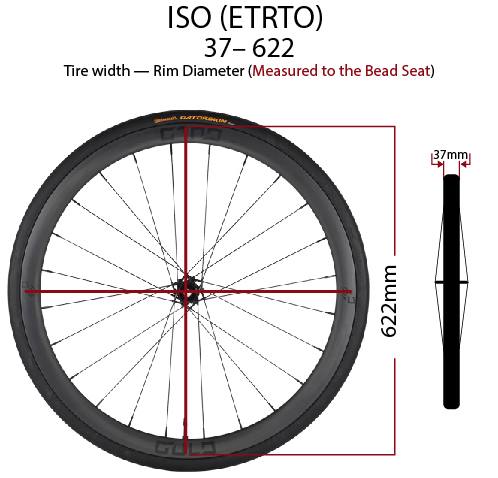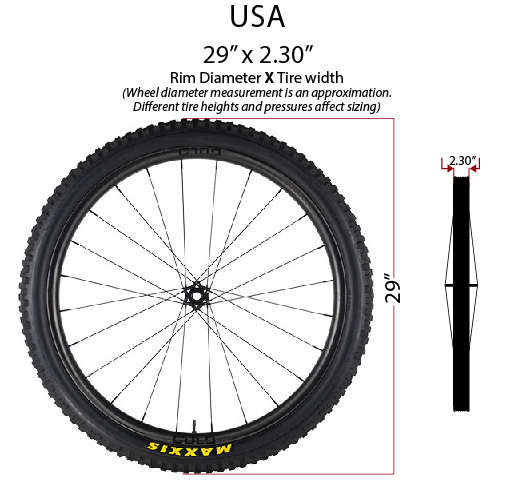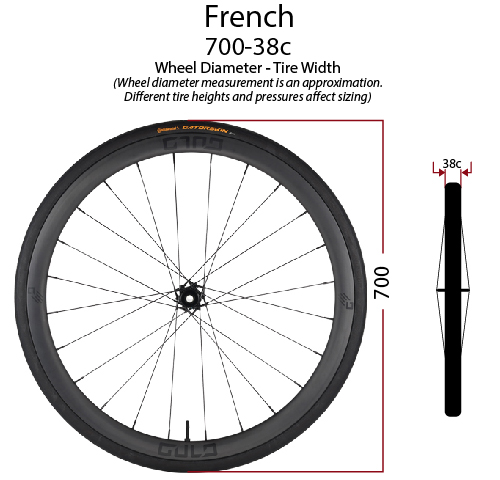Measurement systems for bicycle tires can be confusing especially for beginners.
Everyone in cycling must eventually replace their tires, and tire selection can be confusing. So many options are available today; even the trail-hardened rider can get lost in the weeds trying to sort through it all thats why we created the beginners guide to bicycle tires.
Choosing the right tire and size is crucial for a safe and enjoyable ride. Since tires are the only part of the bike that contacts the ground, tires make a big difference in performance and comfort. Our guide to bike tire sizes explains the different measurement systems and what those numbers mean.
Bicycle tires are usually measured in diameter and width. The diameter is an approximation of the tire’s outside diameter to include the treads and second measurement the width is and approximation width of the tire when it is mounted and inflated on the wheel
Different systems are used to measure the sizes of bicycle tires
ISO (International Organization for Standardization) System. The ISO system is the most widely used method for measuring bicycle tire sizes and uses a two-digit number followed by a dash or X and another three-digit number. The first number represents the tire width, and the second represents the rim’s diameter in millimeters. For example, a tire labeled as “37-622” indicates a tire width of 37 millimeters and a rim diameter of 622 millimeters (measured to the bead seat).
Note: the ISO has adopted ETRTO standards.
American/Imperial System. The American or Imperial system is used primarily in the United States. It employs a two-digit number followed by an inch symbol (“) to represent the rim size. The second number represented in decimal form is the tire width. For example, a tire labeled as “29” x 2.30″ corresponds to a wheel diameter of 29″ and a tire width of 2.30″. Typically this system is used mainly on mountain bike tires.
French System. The French system consists of two numbers and one letter. The first number, 700, means that the tire has an outer diameter of 700mm. The second number, 38c, indicates that the tire is approximately 38mm wide when inflated. Basically, the tire width is measured at the widest point of the tire.
The letter C stands for the approximate tire height and were used to determine the rim diameter required. For example, a tire labeled as “700x38c” indicates a rim diameter of 700 millimeters tire width of 38 millimeters.
The USA and French systems are not as accurate as the ISO standards
The USA and French systems are not as accurate as the ISO standards and is more of an approximation on sizing. Also, it’s worth noting that tire sizing conventions may vary across manufacturers and regions, and there can be additional notations or variations within each system. It’s important to refer to the specific measurements and standards the manufacturer provides when selecting or replacing bicycle tires.
Beginners guide for choosing tires for Road, MTB, and Gravel bikes
Road Bike Tires
Most road bikes use 700c wheels with tires that typically range in widths from 23mm to 32mm. The wider the tire, the more comfortable the ride, but wider tires may be slower and less aerodynamic. For general road riding, 26mm is a good compromise between comfort and performance.
Road tires have a smooth tread pattern for maximum speed and efficiency on smooth surfaces. Consider the weather conditions you’ll be riding in when selecting your tires. If you plan to ride in rainy weather, choose a tire with a slightly textured surface to improve grip on wet roads. If you ride in dry conditions, smooth tires offer better performance.
Gravel Bikes
Generally, for gravel riding, you want a tire size that strikes a balance between speed and traction. A wider tire will provide more traction and stability on rough and loose terrain, while a narrower tire will be faster on smooth surfaces.
Determine your riding style. If you’re an aggressive rider who likes to push the limits, you may prefer a wider tire for more stability and confidence. A narrower tire may be sufficient if you’re a casual rider who enjoys a more relaxed pace, a narrower tire may be sufficient.
Experiment with different tire sizes. Try different tire sizes to find the one that works best for you. You can start with a mid-range size and adjust accordingly. Most new gravel bikes use 700c wheels and run fatter tires ranging from 42 to 45mm. Just make sure whatever tire size you choose will fit your frame.
Remember, there’s no one-size-fits-all solution when choosing the right tire size for gravel riding. It’s a matter of finding the tire that works best for you and your riding style.
Mountain Bikes
Choosing the right tire size for your mountain bike depends on a few factors, including your experience level, the terrain you plan to ride on, and the conditions you’ll encounter
A good size for beginner mountain bike riders is a tire size between 2.1 and 2.3 inches in width. These sizes provide a good balance of traction, stability, and comfort without being too heavy or difficult to handle.
Technical Terrain. If you plan to ride on more technical terrain, such as rocky or steep trails, consider larger tires, up to 2.5 inches in width. These tires will provide more traction and stability on rough terrain but may be slower on smooth surfaces and require more effort to pedal.
Trail Conditions. It’s also important to consider the conditions you’ll be riding in. If you are riding in wet or muddy conditions, a wider tire with aggressive tread can help you maintain traction and control. However, if you are riding in dry conditions, a narrower tire with less aggressive tread may be more appropriate.
Consult with your local bike shop. Ultimately, the best way to determine the right tire size for your mountain bike is to consult with a knowledgeable bike shop or experienced rider in your area who can provide personalized recommendations based on your specific needs and preferences.
Considerations when looking at tire sizes.
- Tire Width
- Tread Pattern
- Tire Pressure
- Durability and Puncture Resistance
- Tubeless option
- Riding Style
To Recap
In simple terms the two common rim sizes used now are 622mm and 584mm . If you have a tire size of 700c or 29″ it will fit on a 622mm wheel and if you have a 650b or 27.5 tire size will fit on a 584mm wheel. Choosing the right tire size for your bicycle is essential to ensure your bike performs well and is comfortable to ride.
Check your bike’s specifications.
The easiest way to find out what size tires your bike needs is to check the specifications in your bike’s owner’s manual or you can check the size on the tire’s side wall. The tire size will be listed in millimeters for road/gravel bikes and typically look like 700 x 38c or 28-622 and for mountain bikes, the size would look something like this “29 x 2.3”.
Several factors can affect tire size choices, like the type of bike, the intended use of the bike, and the manufacturer of the tire. It is always best to consult with a bike shop or a bicycle mechanic to ensure you get the correct tire size for your bike.
Tire Size Chart – General Guide
| Discipline | Tire Size | ISO rim diameter |
|---|---|---|
| Road | 700c x 23mm – 32mm | 622 |
| Gravel & Mixed surface | 700c x 35mm – 50mm | 622 |
| Small road bikes | 650b x 23mm – 32mm | 584 |
| Gravel & Bikepacking | 650b x 45mm – 60mm | 584 |
| Retro & Youth MTB | 26” x 2.1” – 2.6” | 559 |
| Small MTB & Gravel | 27.5” x 2.1” – 2.6” | 584 |
| Modern MTB | 29” x 2.1” – 2.6” | 622 |








